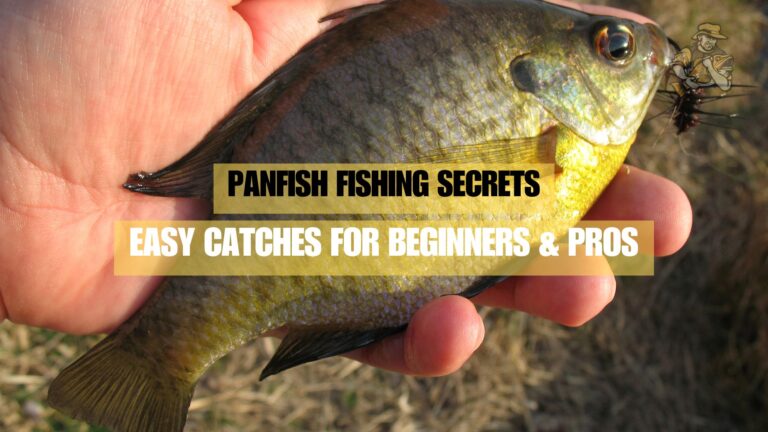Red Belly Piranha
By Ryan Maron | Last Modified: June 8, 2025

The Red Belly Piranha (*Pygocentrus nattereri*) stands as one of South America’s most misunderstood freshwater predators, wielding razor-sharp teeth and powerful jaws that have captured human imagination for decades. Despite their fearsome reputation, these schooling fish serve as crucial components of Amazonian aquatic ecosystems, functioning as both predators and scavengers in complex river food webs. Red Belly Piranhas occupy a vital ecological niche, controlling prey populations while providing sustenance for larger predators including caimans, river dolphins, and giant otters.
Their significance extends beyond ecological roles, as these fish have profoundly influenced local cultures throughout the Amazon Basin and generated substantial interest in the global aquarium trade. Understanding the true nature of Red Belly Piranhas requires examining their biology, behavior, and environmental adaptations through a scientific lens rather than sensationalized media portrayals.
| Feature | Details |
| Common Name | Red Belly Piranha |
| Scientific Name | Pygocentrus nattereri |
| Family | Serrasalmidae |
| Typical Size | 25-35 cm (10-14 inches), 1.8-3.9 kg |
| Habitat | Tropical freshwater rivers and floodplains |
| Diet | Omnivorous opportunist |
| Distribution | Amazon Basin, South America |
| Conservation Status | Least Concern |
Taxonomy & Classification
The Red Belly Piranha belongs to the family Serrasalmidae, which encompasses approximately 95 species of South American characiform fishes. Johann Natterer first collected specimens of *Pygocentrus nattereri* during his extensive Brazilian expeditions in the early 19th century, leading to the species’ formal scientific description. The genus *Pygocentrus* contains four recognized species, with the Red Belly Piranha representing the most widespread and well-studied member.
Within the broader taxonomic framework, Serrasalmidae forms part of the order Characiformes, sharing ancestry with tetras, hatchetfish, and other Neotropical freshwater species. Molecular phylogenetic studies have revealed that piranhas evolved from herbivorous ancestors, developing their carnivorous adaptations relatively recently in evolutionary terms. The family name Serrasalmidae derives from the Latin “serra” meaning saw, referencing the distinctive serrated belly scales that characterize many species within this group.
Recent genetic analyses have clarified relationships within *Pygocentrus*, distinguishing Red Belly Piranhas from closely related species such as *P. piraya* and *P. cariba* based on morphological and molecular characteristics. These taxonomic refinements have important implications for conservation efforts and aquaculture management throughout South America.
Physical Description
Red Belly Piranhas exhibit distinctive morphological features that reflect their predatory lifestyle and Amazonian habitat requirements. Adults typically reach lengths of 25-35 centimeters, with exceptional specimens approaching 40 centimeters in pristine environments. Their compressed, disc-shaped bodies provide excellent maneuverability in densely vegetated waters, while powerful caudal fins enable rapid acceleration during feeding strikes.
The species’ most recognizable feature remains its vibrant crimson ventral coloration, which intensifies during breeding periods and varies in intensity based on water chemistry, diet, and social status. Dorsal surfaces display silver-gray to olive-green pigmentation with darker spotting patterns that provide effective camouflage among aquatic vegetation. Juvenile Red Belly Piranhas show more pronounced spotting and subdued belly coloration compared to mature individuals.
Their formidable dentition consists of triangular, razor-sharp teeth arranged in a single row along each jaw. These teeth continuously replace themselves throughout the fish’s lifetime, ensuring maintained cutting efficiency for processing diverse food sources. The species possesses a protrusible premaxilla, allowing for precise bite placement and enhanced feeding versatility. Gill rakers are well-developed for filter-feeding smaller prey items, while robust pharyngeal teeth assist in processing plant material and crushing hard-shelled invertebrates.
Sexual dimorphism becomes apparent in mature specimens, with males developing more intense coloration and slightly more angular body profiles. During spawning seasons, males often display deeper red pigmentation and exhibit territorial behaviors that distinguish them from females within school formations.
Habitat & Distribution
Red Belly Piranhas inhabit the vast Amazon Basin, ranging from the Orinoco River system in Venezuela southward through Brazil, Peru, Ecuador, Colombia, Bolivia, and northern Paraguay. Their distribution encompasses approximately 5.5 million square kilometers of interconnected river systems, floodplains, and seasonal wetlands. These fish demonstrate remarkable adaptability to diverse aquatic environments, from fast-flowing main river channels to stagnant oxbow lakes and flooded forest areas.
Water temperature preferences range from 24-28°C, with pH tolerance spanning 5.5-7.5, reflecting the naturally acidic to neutral conditions prevalent throughout Amazonian watersheds. Dissolved oxygen requirements vary seasonally, as Red Belly Piranhas have evolved physiological adaptations for surviving hypoxic conditions during dry season lagoon isolations. They show strong preferences for areas with abundant structural complexity, including fallen trees, aquatic vegetation, and rocky substrates that provide both foraging opportunities and predator refuge.
Seasonal flooding cycles profoundly influence Red Belly Piranha distribution patterns and population dynamics. During high water periods, schools disperse across vast floodplains accessing terrestrial food sources and novel breeding habitats. As waters recede, populations concentrate in permanent river channels and deeper pools, creating the high-density aggregations often associated with aggressive feeding behaviors.
Human activities have significantly altered their natural range through dam construction, deforestation, and habitat fragmentation. Additionally, introduced populations now exist in several regions outside their native range, including parts of North America and Asia, raising ecological concerns about invasive species impacts on local freshwater communities.
Diet & Feeding Behavior
Contrary to popular misconceptions, Red Belly Piranhas function as omnivorous opportunists rather than exclusively carnivorous predators. Comprehensive dietary studies reveal that plant material constitutes 45-85% of their nutrition depending on seasonal availability and habitat conditions. They actively consume fruits, seeds, aquatic vegetation, and algae, playing important roles as seed dispersers within Amazonian ecosystems.
Animal prey includes insects, crustaceans, mollusks, smaller fish, and occasionally amphibians or reptiles. Their feeding strategy emphasizes scavenging over active predation, with schools often congregating around deceased animals or injured fish. The famous feeding frenzies occur primarily during dry season conditions when prey density increases in restricted water bodies, creating intense intraspecific competition for limited resources.
Red Belly Piranhas employ sophisticated foraging techniques adapted to different prey types. For plant material, they use their sharp teeth to slice through tough seed coats and fibrous tissues. When pursuing live prey, coordinated group hunting allows them to overwhelm larger targets through synchronized attacks. Their powerful jaws generate bite forces exceeding 320 Newtons, enabling them to process diverse food sources efficiently.
Feeding patterns exhibit distinct diel rhythms, with peak activity occurring during dawn and dusk periods. Juvenile Red Belly Piranhas focus heavily on planktonic organisms and small invertebrates, gradually incorporating larger prey items and plant material as they mature. Seasonal dietary shifts reflect changing resource availability, with fruit consumption peaking during high water periods when flooded forests provide abundant terrestrial food sources.
Scavenging behaviors demonstrate their ecological importance as nutrient recyclers within aquatic systems. Schools quickly locate carcasses through chemoreception and acoustic cues, efficiently processing organic matter that might otherwise contribute to water quality degradation.
Behavior & Adaptations
Red Belly Piranhas exhibit complex social behaviors centered around dynamic schooling patterns that serve multiple ecological functions. School sizes range from small groups of 10-15 individuals to massive aggregations exceeding 1,000 fish during optimal conditions. These formations provide protection from predators, enhance foraging efficiency, and facilitate reproductive synchronization within populations.
Their schooling behavior demonstrates sophisticated communication systems involving visual, chemical, and acoustic signals. Red pigmentation intensity serves as a visual indicator of individual condition and social status, while pheromone release allows for species recognition and reproductive coordination. Recent research has identified low-frequency sound production during feeding and territorial interactions, suggesting acoustic communication capabilities previously unrecognized in this species.
Territorial behaviors emerge primarily during spawning periods when breeding pairs establish and defend nesting sites. Males become increasingly aggressive toward conspecifics, displaying enhanced coloration and engaging in ritualized combat involving circling movements and jaw snapping. These territorial displays rarely result in serious injury, instead functioning to establish dominance hierarchies and reproductive access.
Red Belly Piranhas possess remarkable physiological adaptations for surviving Amazonian environmental challenges. During dry season isolations in stagnant pools, they can tolerate dissolved oxygen levels as low as 2 mg/L through behavioral and metabolic adjustments. Their ability to enter semi-dormant states during extreme conditions enables survival in environments that would prove lethal to less adapted species.
Predator avoidance strategies include synchronized escape responses when threatened, with entire schools capable of instantaneous directional changes coordinated through lateral line system sensitivity. Juvenile fish often seek refuge among aquatic vegetation or in shallow areas inaccessible to larger predators, gradually joining adult schools as they reach maturity.
Reproduction & Life Cycle
Red Belly Piranha reproductive cycles synchronize closely with Amazonian flood pulses, typically initiating spawning activities during rising water periods between October and March. Sexual maturity occurs at approximately 12-18 months of age, corresponding to body lengths of 15-20 centimeters. Breeding pairs form within larger school structures, with courtship behaviors involving elaborate displays of coloration, circular swimming patterns, and nest preparation activities.
Males select spawning sites in shallow areas with firm substrates, often among aquatic vegetation or near submerged logs. They construct circular nests approximately 15-20 centimeters in diameter by removing debris and creating slight depressions in sandy or muddy bottoms. Nest defense behaviors include aggressive posturing toward intruders and continuous maintenance of the spawning area.
Females deposit 1,000-5,000 adhesive eggs within prepared nests, with larger individuals producing proportionally more offspring. Fertilization occurs externally as males release milt over the egg mass, followed by intensive parental care from both parents. Males assume primary responsibility for nest guarding, fanning eggs with their pectoral fins to ensure adequate oxygenation and removing fungal infections or dead embryos.
Embryonic development requires 9-15 days depending on water temperature, with optimal conditions accelerating hatching times. Newly hatched larvae remain attached to nest substrates via yolk sacs for an additional 4-7 days before achieving free-swimming capability. During this vulnerable period, parents continue providing protection and maintaining nest cleanliness.
Juvenile Red Belly Piranhas initially feed on microscopic plankton and gradually incorporate larger prey items as their mouths develop. Growth rates vary significantly based on food availability and environmental conditions, with well-nourished individuals reaching adult size within 12-18 months. Natural mortality rates are highest during the first few months of life due to predation pressure and environmental stressors.
Reproductive success correlates strongly with flooding patterns, as extended high water periods provide optimal spawning conditions and abundant food resources for developing young. Climate changes affecting Amazonian hydrology therefore pose potential threats to Red Belly Piranha population stability and recruitment success.
Predators & Threats
Despite their fearsome reputation, Red Belly Piranhas face predation pressure from numerous Amazonian species throughout their life cycle. Adult predators include large catfish such as *Pseudoplatystoma* species, electric eels (*Electrophorus electricus*), and various cichlid species that can overpower individual piranhas separated from protective schools. Aquatic mammals pose significant threats, with river dolphins (*Inia geoffrensis*) and giant otters (*Pteronura brasiliensis*) actively hunting piranha schools using sophisticated cooperative strategies.
Avian predators play important roles in controlling piranha populations, particularly during dry season concentrations when fish become vulnerable in shallow waters. Great egrets, tiger herons, and kingfishers effectively capture juvenile and adult Red Belly Piranhas, while cormorants dive to pursue schools in deeper waters. Caimans represent apex predators capable of consuming large numbers of piranhas during seasonal aggregations.
Juvenile mortality reaches extreme levels due to intense predation from diverse aquatic invertebrates, small fish, and amphibians. Dragonfly larvae, water bugs, and predaceous diving beetles actively hunt newly hatched piranhas, while larger fish species including their own parents may engage in cannibalistic behaviors during food shortages.
Anthropogenic threats increasingly impact Red Belly Piranha populations throughout their range. Deforestation reduces riparian vegetation crucial for their feeding ecology, while agricultural runoff introduces pesticides and fertilizers that degrade water quality. Dam construction fragments river systems and alters natural flooding cycles essential for successful reproduction.
Overfishing for local consumption and international aquarium trade has intensified pressure on wild populations near urban areas. Climate change affects Amazonian precipitation patterns, potentially disrupting seasonal flooding cycles that regulate piranha reproductive success and food availability. Mercury contamination from illegal gold mining operations bioaccumulates in piranha tissues, threatening both fish health and human consumers who rely on them for protein.
Invasive species introductions in some watersheds create novel competitive pressures, while habitat destruction eliminates critical spawning and nursery areas. The cumulative effects of these multiple stressors require careful monitoring to ensure long-term population viability across their natural range.
Conservation Status
The International Union for Conservation of Nature (IUCN) currently classifies Red Belly Piranhas as Least Concern due to their extensive distribution range and apparent population stability across most of the Amazon Basin. However, this broad classification masks significant regional variations in population health and emerging conservation challenges that warrant increased scientific attention.
Local population declines have been documented near major urban centers including Manaus, Iquitos, and Leticia, where intensive fishing pressure and habitat degradation have reduced piranha abundance. These localized impacts highlight the species’ vulnerability to human activities despite their overall resilience. Several Brazilian states have implemented seasonal fishing restrictions during spawning periods to protect reproductive populations.
Conservation efforts focus primarily on habitat protection through the establishment of protected areas and sustainable fisheries management. The Amazon Conservation Association and similar organizations work to preserve critical wetland habitats essential for Red Belly Piranha reproduction and recruitment. Indigenous territories often provide the most effective protection for piranha populations, as traditional management practices maintain ecosystem integrity.
Research initiatives supported by institutions like the National Institute for Amazonian Research (INPA) monitor population trends and investigate the effects of environmental changes on piranha ecology. These studies provide essential data for developing evidence-based conservation strategies and assessing the species’ vulnerability to climate change impacts.
International trade regulations under CITES monitoring help control wild collection for the aquarium industry, though enforcement remains challenging in remote areas. Captive breeding programs have reduced demand for wild-caught specimens while supporting ex-situ conservation efforts. Education programs work to correct misconceptions about piranha behavior and promote appreciation for their ecological importance.
The species’ conservation future depends largely on broader Amazonian ecosystem protection, as Red Belly Piranhas serve as indicator species for freshwater habitat health. Continued monitoring and adaptive management strategies will be essential for maintaining stable populations in the face of accelerating environmental changes throughout their range.
Human Interaction
Red Belly Piranhas have maintained complex relationships with human populations throughout the Amazon Basin for millennia, serving as important protein sources for indigenous communities while simultaneously inspiring cultural traditions and spiritual beliefs. Archaeological evidence suggests that native peoples have harvested piranhas sustainably for over 8,000 years, developing sophisticated fishing techniques adapted to seasonal behavioral patterns.
Modern subsistence fishing communities continue relying on Red Belly Piranhas for nutritional security, particularly during flood seasons when terrestrial protein sources become scarce. Traditional fishing methods include specialized traps, nets, and hook-and-line techniques that target schooling behaviors. Local markets throughout the Amazon region regularly feature piranhas as affordable protein options, with peak demand occurring during religious festivals and seasonal celebrations.
The international aquarium trade has created significant economic opportunities for rural communities engaged in piranha collection and export. However, this industry also raises conservation concerns regarding over-collection of wild populations and potential for invasive species introductions. Many jurisdictions now regulate piranha trade through licensing requirements and seasonal restrictions.
Recreational fishing for Red Belly Piranhas attracts increasing numbers of sport anglers seeking unique experiences in Amazonian waters. Eco-tourism operations capitalize on piranha fishing opportunities while promoting conservation awareness and supporting local economies. These activities require careful management to prevent negative impacts on wild populations and sensitive aquatic habitats.
Media portrayals have historically sensationalized piranha behavior, creating widespread misconceptions about their aggressiveness and danger to humans. Scientific education efforts work to counter these myths while promoting accurate understanding of piranha ecology and behavior. Attack incidents on humans remain extremely rare and typically involve defensive behaviors rather than predatory aggression.
Aquaculture research explores Red Belly Piranha potential for sustainable protein production, though their carnivorous requirements present economic challenges compared to herbivorous alternatives. Some operations successfully rear piranhas using locally available feed sources, contributing to food security in regions with limited agricultural capacity.
Interesting Facts
Red Belly Piranhas possess extraordinary bite force capabilities relative to their body size, generating pressures equivalent to 30 times their body weight. This remarkable jaw strength exceeds that of many larger predatory fish and enables them to process an incredibly diverse range of food sources from delicate fruits to tough seeds and animal tissues.
Seasonal color changes in Red Belly Piranhas extend beyond simple breeding displays, with environmental factors such as water chemistry, temperature, and diet significantly influencing pigmentation intensity. Specimens in tannin-rich blackwater systems often develop deeper red coloration compared to those inhabiting clear or whitewater environments.
These fish exhibit surprising intelligence and learning capabilities, with laboratory studies demonstrating their ability to recognize individual humans, navigate complex mazes, and adapt feeding strategies based on experience. Some captive specimens have shown tool-use behaviors when manipulating objects to access hidden food rewards.
Red Belly Piranhas can survive complete burial in mud during extreme dry season conditions, entering a state of estivation similar to lungfish adaptations. Their metabolic rate drops dramatically during these periods, allowing survival for weeks without food or normal oxygen levels until flooding resumes.
Acoustic research has revealed that Red Belly Piranhas produce species-specific vocalizations using specialized sonic muscles near their swim bladders. These sounds facilitate school coordination, territorial communication, and potentially mate selection during breeding periods.
The species demonstrates remarkable regenerative abilities, capable of regrowing damaged fins, scales, and even portions of jaw tissue following injuries. This healing capacity proves essential for surviving the aggressive interactions common within dense school formations and territorial disputes.
Traditional Amazonian communities have developed over 40 different preparation methods for piranhas, including specialized techniques for removing their numerous bones and creating nutritious broths from heads and skeletal remains. Some indigenous groups consider piranha consumption essential for developing courage and strength.
Red Belly Piranhas exhibit distinct preferences for different fruit species, with some research suggesting they may influence plant community composition through selective seed dispersal. Their feeding activities can transport viable seeds over considerable distances during flood season migrations.
Frequently Asked Questions
Are Red Belly Piranhas dangerous to humans?
Red Belly Piranhas pose minimal threat to humans under normal circumstances. Documented attacks are extremely rare and typically involve defensive behaviors when fish are cornered or handled directly. Swimming in piranha-inhabited waters carries negligible risk, as these fish naturally avoid large moving objects and primarily feed on much smaller prey items.
What do Red Belly Piranhas actually eat in the wild?
Wild Red Belly Piranhas maintain omnivorous diets consisting predominantly of plant material including fruits, seeds, and aquatic vegetation. Animal prey comprises only 15-55% of their nutrition and includes insects, crustaceans, small fish, and carrion rather than large living animals. Their feeding behavior emphasizes scavenging over active predation.
Can Red Belly Piranhas survive in cold water environments?
Red Belly Piranhas require tropical temperatures between 24-28°C for optimal health and cannot survive extended exposure to temperatures below 18°C. This temperature sensitivity prevents their establishment in temperate climates and explains why introduced populations remain confined to artificially heated environments or warm-water discharge areas.
How do Red Belly Piranhas behave in aquarium settings?
Captive Red Belly Piranhas typically display much less aggressive behavior than their wild reputation suggests, often appearing shy and skittish in home aquariums. They require large tanks with secure covers, as they can jump when startled. Proper care involves maintaining warm water temperatures, providing varied diets, and keeping multiple individuals to satisfy their schooling instincts.
Conclusion
Red Belly Piranhas represent far more than the sensationalized predators of popular imagination, functioning as keystone species within complex Amazonian ecosystems through their roles as omnivorous foragers, seed dispersers, and nutrient recyclers. Their remarkable adaptations to seasonal flooding cycles and diverse feeding strategies demonstrate the evolutionary sophistication underlying their ecological success throughout South American river systems. Understanding and protecting these fascinating fish requires continued scientific research, habitat conservation, and public education efforts that promote accurate appreciation of their true ecological significance rather than perpetuating harmful misconceptions about their behavior and environmental role.
Share The Article:
More Fish Species:
-
Siamese Fighting Fish
The Siamese Fighting Fish, scientifically known as *Betta splendens*, stands as one of the most recognizable and culturally significant…
-
Mosquito Fish
The Mosquito Fish (Gambusia affinis) stands as one of North America’s most ecologically significant freshwater species, despite its diminutive…
-
Rosetail Betta
The Rosetail Betta (Betta splendens) stands as one of the most visually striking variations within the diverse world of…
-
Blood Parrot Cichlid
The Blood Parrot Cichlid stands as one of the most distinctive and controversial specimens in contemporary aquarium culture. This…
-
Half Moon Betta
The Half Moon Betta (Betta splendens) represents one of the most distinctive and sought-after varieties within the Siamese fighting…
-
Killifish
Killifish represent one of the most diverse and ecologically significant groups of small freshwater and brackish water fish, comprising…
Discover
-
King Mackerel Fishing: Top Strategies for Landing Smokers
Some days on the water just stick with you. Few things compare to that first time a king mackerel…
-
7 Unusual Ways to Catch Trout in Lakes (That Most Anglers Miss)
Chasing trout in lakes can be maddeningly difficult. Trust me, I’ve spent countless mornings staring at a dead rod…
-
Lemon Shark
The Lemon Shark (*Negaprion brevirostris*) represents one of the most scientifically studied and ecologically significant predators in coastal marine…
-
Yellowfin VS Bluefin Tuna: Which Should You Target? (Expert Guide)
Let’s be honest – the first time I saw a yellowfin and bluefin tuna side by side at the…
-
Surfcasting Techniques: Master Beach Fishing and Catch More Fish
There’s something almost magical about standing at the edge of an ocean, rod in hand, as waves crash around…
-
Crappie Fishing Guide for Beginners | 2025
Crappie fishing might just be one of the most rewarding experiences for new anglers. These popular panfish are abundant,…
Discover
-
What do You Need for Fishing in 2025? | Essential Gear for Beginners and Veterans
As I was organizing my tackle box last weekend for an early spring trip to Lake Michigan, I realized…
-
Balloon Molly
The Balloon Molly (*Poecilia latipinna* var.) represents one of the most distinctive and popular ornamental fish varieties in the…
-
Whale Shark
The whale shark (*Rhincodon typus*) stands as the ocean’s largest fish species, representing one of nature’s most remarkable gentle…
-
Southern Platyfish
The Southern Platyfish, scientifically known as *Xiphophorus maculatus*, represents one of the most significant freshwater fish species in both…
-
15 Panfish Fishing Secrets: Easy Catches for Beginners & Pros
You know what’s funny about panfish? These little fighters have probably hooked more new anglers than any other species,…
-
Fly Tying for Fishing Success: A Practical Guide for Anglers
There’s something deeply satisfying about catching a fish on a fly you’ve tied with your own hands. I still…










